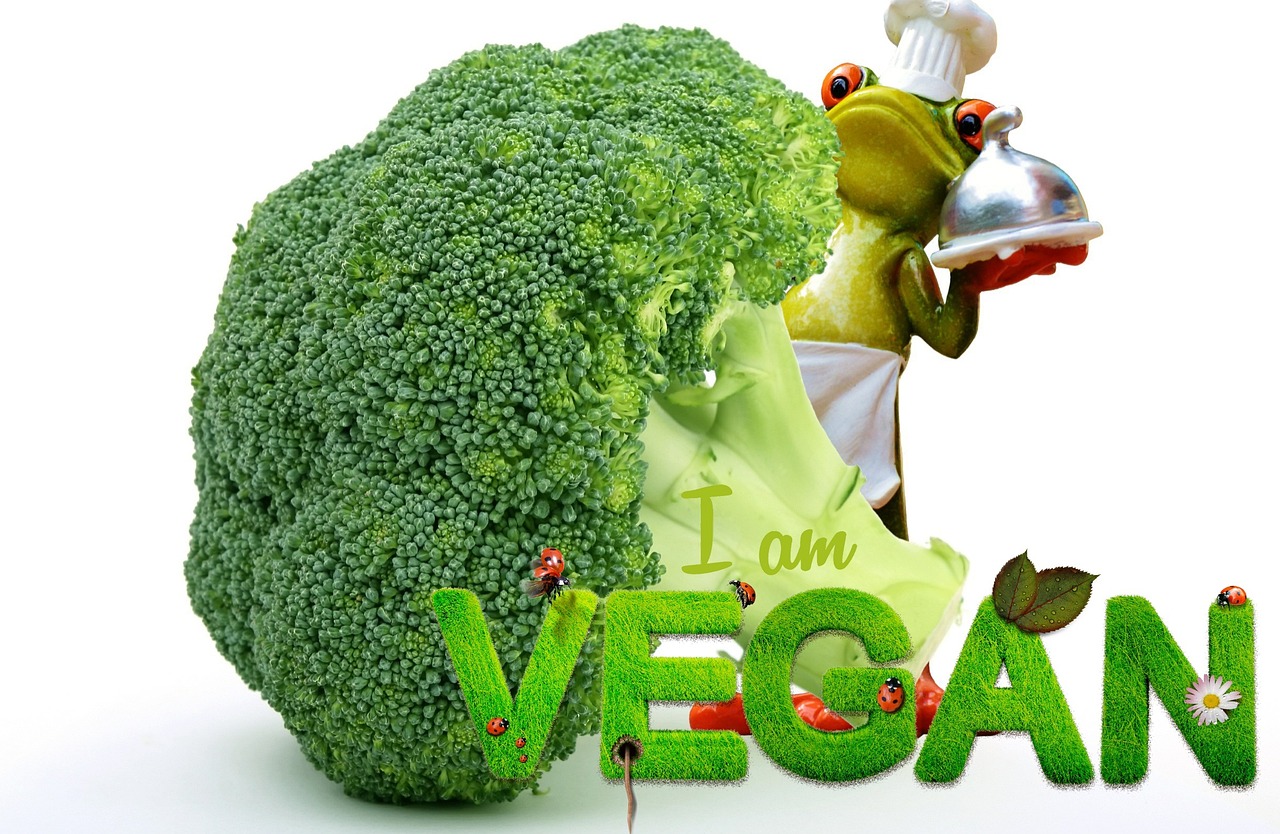The Role of Veganism in Reducing Greenhouse Gases
As we stand on the brink of a climate crisis, the choices we make every day can have a profound impact on the environment. One of the most significant yet often overlooked ways to combat climate change is through adopting a vegan lifestyle. This article explores how embracing veganism not only benefits our health but also plays a crucial role in reducing greenhouse gas emissions. By understanding the connection between our food choices and their environmental impact, we can make informed decisions that contribute to a more sustainable future.
Greenhouse gases, such as carbon dioxide (CO2), methane (CH4), and nitrous oxide (N2O), are responsible for trapping heat in the atmosphere, leading to global warming and climate change. These gases come from various sources, but one of the largest contributors is animal agriculture. The production of meat and dairy releases an alarming amount of greenhouse gases, primarily due to the methane produced by livestock and the deforestation caused by land clearing for grazing. In fact, studies show that the livestock sector alone is responsible for about 14.5% of global greenhouse gas emissions, a figure that cannot be ignored if we are serious about tackling climate change.
Animal agriculture is not just a small piece of the climate puzzle; it is a major player that significantly contributes to greenhouse gas emissions. The statistics are staggering. For instance, producing one kilogram of beef can generate up to 27 kilograms of CO2 equivalent, while plant-based foods like lentils and beans produce far less. This stark contrast highlights the environmental burden of meat and dairy production. The land, water, and energy used in raising livestock are immense, leading to habitat destruction, water scarcity, and a depletion of natural resources. It’s crucial to recognize that our dietary choices have a ripple effect on the planet, influencing everything from biodiversity to air quality.
When we compare the carbon footprints of meat and plant-based foods, the differences are eye-opening. A plant-based diet can reduce an individual's carbon footprint by up to 50%. This is not merely a statistic; it’s a call to action. Imagine if everyone shifted towards a more plant-based diet—this could lead to a substantial decrease in global emissions. For example, chickpeas, quinoa, and tofu not only provide essential nutrients but also come with a significantly lower environmental cost. By choosing these alternatives, we can enjoy delicious meals while also being stewards of the earth.
To truly grasp the impact of our food choices, we must examine global meat consumption trends. According to the Food and Agriculture Organization (FAO), meat consumption has more than doubled since the 1960s, leading to increased emissions and environmental degradation. This rise in demand correlates directly with a spike in greenhouse gas emissions. The following table illustrates the relationship between meat consumption and greenhouse gas emissions:
| Type of Meat | Emissions (kg CO2e per kg) |
|---|---|
| Beef | 27 |
| Lamb | 39 |
| Pork | 12 |
| Chicken | 6 |
| Plant-based foods (average) | 0.5 - 2 |
Plant-based alternatives are gaining traction as sustainable options that not only satisfy our taste buds but also help mitigate climate change. Products like plant-based burgers, almond milk, and vegan cheeses are becoming increasingly popular. These alternatives can effectively replace meat while significantly reducing greenhouse gas emissions. Moreover, they often require less land, water, and energy to produce, making them a win-win for both our health and the planet. Transitioning to a vegan diet doesn't mean sacrificing flavor or variety; it opens up a world of culinary possibilities that are both delicious and eco-friendly.
Adopting a vegan diet is not just about environmental sustainability; it also promotes personal health. Research has shown that a plant-based diet can lower the risk of chronic diseases such as heart disease, diabetes, and certain cancers. By consuming a variety of fruits, vegetables, whole grains, and legumes, individuals can enjoy a rich array of nutrients while reducing their intake of saturated fats and cholesterol found in animal products. It’s a lifestyle choice that nurtures your body while nurturing the planet.
Sustainable agriculture practices are essential for reducing greenhouse gases, and veganism aligns perfectly with these techniques. By focusing on plant-based food production, we can minimize the environmental footprint of our agricultural systems. Sustainable practices such as crop rotation, organic farming, and permaculture contribute to healthier ecosystems and reduced emissions. This shift towards sustainable farming not only benefits the environment but also supports local economies and communities.
Integrating permaculture principles with vegan practices enhances sustainability even further. Permaculture focuses on creating self-sustaining ecosystems that work in harmony with nature. By adopting vegan practices within these systems, we can cultivate crops that provide food while restoring soil health and biodiversity. This synergy between permaculture and veganism creates a balanced ecosystem that benefits both people and the planet.
Community initiatives play a vital role in promoting veganism and raising awareness about its benefits. Programs such as community gardens, vegan cooking classes, and local farmers' markets encourage individuals to explore plant-based diets. These initiatives foster a sense of community while empowering people to make sustainable choices. As more communities embrace veganism, we can collectively work towards combating climate change and creating a healthier planet for future generations.
- What are the main greenhouse gases produced by animal agriculture? The primary greenhouse gases include methane, carbon dioxide, and nitrous oxide, all of which are significantly emitted during the production of meat and dairy.
- How can a vegan diet help reduce my carbon footprint? By eliminating or reducing meat and dairy consumption, you can lower your carbon emissions, as plant-based foods generally have a much lower environmental impact.
- Are plant-based diets healthy? Yes! A well-balanced vegan diet can provide all the necessary nutrients and is associated with a lower risk of chronic diseases.
- What are some easy plant-based alternatives to meat? Some popular alternatives include tofu, tempeh, lentils, chickpeas, and various meat substitutes made from plants.

Understanding Greenhouse Gases
Greenhouse gases (GHGs) are like a cozy blanket for our planet, trapping heat in the atmosphere and keeping it warm enough to support life. However, when these gases accumulate in excess, they can lead to serious climate issues. The main culprits of GHGs include carbon dioxide (CO2), methane (CH4), nitrous oxide (N2O), and fluorinated gases. Each of these gases has its own sources and impacts, but animal agriculture is a significant contributor to many of them.
To better understand the role of these gases, let’s break them down:
- Carbon Dioxide (CO2): This is the most prevalent greenhouse gas, primarily released through burning fossil fuels, deforestation, and various industrial processes. Interestingly, while CO2 is often associated with transportation and energy production, it also stems from land-use changes associated with livestock farming.
- Methane (CH4): Methane is a potent greenhouse gas that is over 25 times more effective than CO2 at trapping heat over a 100-year period. It is released during the digestive processes of ruminant animals (like cows) and from manure management practices. The livestock sector is responsible for a significant portion of global methane emissions.
- Nitrous Oxide (N2O): This gas is released from synthetic fertilizers used in animal feed production and from manure. It has a global warming potential nearly 300 times that of CO2, making it a serious concern in the context of agriculture.
- Fluorinated Gases: While these are not directly related to animal agriculture, they are emitted from various industrial processes and have a very high global warming potential, contributing to the overall greenhouse effect.
In summary, the interplay of these gases creates a complex web of environmental challenges. Animal agriculture, particularly through methane and nitrous oxide emissions, plays a pivotal role in this scenario. Understanding the sources and impacts of greenhouse gases is crucial for developing effective strategies to mitigate climate change. By adopting a vegan lifestyle, individuals can significantly reduce their carbon footprint and contribute to a more sustainable future.

The Environmental Impact of Animal Agriculture
When we think about the environmental consequences of our food choices, the impact of animal agriculture often flies under the radar. But did you know that this sector is one of the leading contributors to greenhouse gas emissions? In fact, research indicates that livestock production accounts for approximately 14.5% of all anthropogenic emissions globally. This staggering statistic underscores the urgent need to reconsider how we source our food.
Animal agriculture encompasses a wide range of practices, from raising livestock for meat to producing dairy products. The process involves not just the animals themselves, but also the resources required to feed, house, and transport them. For example, the production of feed crops like corn and soybeans, which are primarily grown for livestock, demands vast amounts of water and land, often leading to deforestation and habitat destruction.
Furthermore, the environmental repercussions extend beyond just greenhouse gases. The waste generated by livestock farms can contaminate water supplies, leading to eutrophication—a process where water bodies become overly enriched with nutrients, causing algal blooms that deplete oxygen and harm aquatic life. This is a problem that we can't afford to ignore, especially as the global demand for meat continues to rise.
To put things into perspective, let’s take a look at the carbon footprints associated with different types of food production. The following table illustrates the estimated greenhouse gas emissions per kilogram of various food products:
| Food Type | Greenhouse Gas Emissions (kg CO2 equivalent) |
|---|---|
| Beef | 27 |
| Lamb | 39 |
| Pork | 12 |
| Chicken | 6 |
| Eggs | 4.8 |
| Dairy | 3.2 |
| Plant-Based Foods (e.g., lentils, beans) | 0.5 - 2 |
As we can see, the emissions from beef and lamb are alarmingly high compared to plant-based foods. Transitioning to a more plant-centric diet could significantly reduce our individual and collective carbon footprints. But it’s not just about numbers; it’s about making conscious choices that align with our values and the future of our planet.
Moreover, the environmental impact of animal agriculture is not just limited to greenhouse gases. The resource-intensive nature of livestock farming also leads to significant water usage. For instance, producing just one kilogram of beef can require up to 15,000 liters of water! This is a stark reminder that our dietary choices have far-reaching implications—not just for our health, but for the health of the planet.
In conclusion, the environmental impact of animal agriculture is profound and multifaceted. By understanding the implications of our food choices, we can make informed decisions that not only benefit our health but also help mitigate climate change. A shift towards a vegan or plant-based diet is not merely a personal choice; it is a powerful statement that can drive change on a global scale.
- How does animal agriculture contribute to climate change? Animal agriculture produces significant greenhouse gas emissions, mainly methane and nitrous oxide, which trap heat in the atmosphere.
- What are the alternatives to animal products? Plant-based foods such as legumes, grains, fruits, and vegetables serve as sustainable alternatives that have a much lower environmental impact.
- Can a vegan diet provide sufficient nutrients? Yes, a well-planned vegan diet can meet all nutritional needs and provide health benefits, including lower risks of chronic diseases.
- What can individuals do to reduce their impact? Reducing meat consumption, choosing plant-based options, and supporting sustainable farming practices are effective ways to lessen your environmental footprint.

Carbon Footprint of Meat vs. Plant-Based Foods
When we talk about the carbon footprint of our food choices, the differences between meat and plant-based foods are nothing short of staggering. Imagine a world where your plate doesn't just satisfy your hunger but also contributes to a healthier planet. Sounds appealing, right? Well, the reality is that the production of meat is one of the leading causes of greenhouse gas emissions, contributing to climate change in a big way. Studies have shown that producing just one kilogram of beef can emit as much as 27 kilograms of CO2 equivalent. In contrast, plant-based foods like lentils or chickpeas emit only about 0.5 kilograms of CO2 equivalent for the same quantity.
To visualize this, let's look at a simple comparison:
| Food Type | CO2 Emissions (per kg) |
|---|---|
| Beef | 27 kg |
| Pork | 12 kg |
| Chicken | 6 kg |
| Lentils | 0.5 kg |
| Chickpeas | 0.5 kg |
This stark contrast highlights just how impactful our dietary choices can be. By shifting from a meat-centric diet to one rich in plant-based foods, we can drastically reduce our personal carbon footprints. But it's not just about the numbers; it's about the ripple effects of our choices. When we choose plant-based options, we are not only reducing emissions but also conserving water, land, and other vital resources.
Have you ever thought about how much water it takes to produce a single hamburger? A staggering 1,800 gallons of water are required to raise the cattle, grow the feed, and process the meat. In contrast, a plant-based diet often requires significantly less water. For instance, producing a kilogram of beans may only use around 1,300 gallons of water. This means that by embracing a vegan lifestyle, not only do we cut down on greenhouse gases, but we also contribute to water conservation, which is crucial in our fight against climate change.
In conclusion, the carbon footprint of meat is undeniably larger than that of plant-based foods. By making conscious choices about what we put on our plates, we can play a pivotal role in reducing greenhouse gas emissions and fostering a more sustainable future. So, the next time you sit down for a meal, consider the impact of your choices. Could that plate of pasta or those roasted veggies be a step towards saving our planet?

Statistics on Meat Consumption
When we dive into the world of meat consumption, the numbers are staggering and tell a compelling story about our eating habits and their environmental consequences. According to the Food and Agriculture Organization (FAO), global meat consumption has nearly doubled since the 1970s, reaching approximately 360 million tons in 2020. This dramatic increase is not just a statistic; it reflects a significant shift in dietary patterns across the globe, especially in developing countries where meat is often seen as a symbol of prosperity.
But what does this mean for our planet? The emissions associated with meat production are alarming. For instance, it is estimated that livestock production alone accounts for about 14.5% of all human-induced greenhouse gas emissions. This is comparable to the emissions produced by all the cars, trucks, planes, and ships combined! To put this into perspective, let’s take a look at the carbon footprint of various meats:
| Type of Meat | CO2 Emissions (kg per kg of meat) |
|---|---|
| Beef | 27 |
| Lamb | 39 |
| Pork | 12 |
| Chicken | 6 |
| Plant-Based Proteins (e.g., lentils, beans) | 0.5 |
This table clearly illustrates the stark contrast between meat and plant-based proteins. For every kilogram of beef produced, around 27 kg of CO2 is emitted, while plant-based proteins generate a mere 0.5 kg. This discrepancy highlights the potential for reducing our carbon footprint by opting for plant-based alternatives.
Additionally, consider the following insights about meat consumption trends:
- In 2020, the average global meat consumption was about 43 kg per person.
- Regions such as North America and Europe have the highest per capita meat consumption, with averages exceeding 100 kg per person.
- Emerging economies, like China and Brazil, are witnessing a rapid increase in meat consumption, which poses a significant challenge for global sustainability efforts.
These statistics not only reflect our dietary choices but also serve as a wake-up call. As we grapple with climate change, understanding the implications of our meat consumption is essential. By making informed choices and considering a shift towards a vegan or plant-based diet, we can collectively reduce greenhouse gas emissions and work towards a more sustainable future.
Q: How much can a vegan diet reduce my carbon footprint?
A: Studies suggest that adopting a vegan diet can reduce an individual's carbon footprint by up to 50% compared to a meat-heavy diet.
Q: Are there health benefits to reducing meat consumption?
A: Yes! Reducing meat consumption can lead to lower risks of chronic diseases, improved heart health, and better weight management.
Q: Can plant-based diets provide sufficient protein?
A: Absolutely! There are plenty of plant-based sources of protein, such as legumes, nuts, seeds, and whole grains that can meet your dietary needs.

Benefits of Plant-Based Alternatives
In recent years, plant-based alternatives have surged in popularity, and for good reason! These substitutes for meat and dairy not only cater to the growing demand for ethical and sustainable food choices but also offer a plethora of benefits that can positively impact both our health and the environment. Imagine a world where your meal choices contribute to a healthier planet—this is the promise of adopting plant-based alternatives.
First and foremost, the environmental benefits are striking. Studies have shown that producing plant-based foods typically results in significantly lower greenhouse gas emissions compared to meat production. For instance, beef production is responsible for an astonishing amount of carbon dioxide and methane emissions, which are major contributors to climate change. In contrast, foods like legumes, grains, and vegetables have a much smaller carbon footprint. To put this into perspective, consider the following table:
| Food Type | Greenhouse Gas Emissions (kg CO2e per kg) |
|---|---|
| Beef | 27 |
| Pork | 12 |
| Chicken | 6 |
| Lentils | 0.9 |
| Tofu | 2.0 |
This table illustrates just how much more environmentally friendly plant-based options can be. By opting for these alternatives, consumers can significantly reduce their carbon footprints. Additionally, plant-based diets are often linked to lower water usage and land degradation, making them a more sustainable choice overall.
But it’s not just about the environment; there are also numerous health benefits associated with adopting a plant-based diet. Research has shown that individuals who consume more fruits, vegetables, and whole grains tend to have lower risks of chronic diseases such as heart disease, diabetes, and certain types of cancer. Plant-based foods are typically rich in essential nutrients, fiber, and antioxidants, which are crucial for maintaining good health.
Moreover, plant-based alternatives can cater to a variety of dietary needs. Whether you're looking for gluten-free options, high-protein sources, or simply trying to eat more whole foods, the market is now flooded with choices. This versatility makes it easier than ever to transition to a plant-based lifestyle without feeling deprived. For example, you can find:
- Almond milk as a creamy alternative to dairy milk
- Jackfruit as a meat substitute in tacos and sandwiches
- Chickpea pasta for a protein-packed twist on traditional pasta
Lastly, the ethical considerations surrounding animal agriculture cannot be ignored. Many people choose plant-based alternatives to avoid contributing to the suffering of animals raised for food. By opting for vegan options, consumers are making a statement about their values, promoting a more compassionate and humane food system.
In summary, the benefits of plant-based alternatives are multifaceted, encompassing environmental sustainability, health advantages, and ethical considerations. By embracing these options, individuals can play a pivotal role in combating climate change while also enhancing their overall well-being. So, why not give it a try? Your body and the planet will thank you!
Q: Are plant-based alternatives more expensive than meat?
A: While some plant-based products can be pricey, many staples like beans, lentils, and grains are often cheaper than meat. Additionally, as demand grows, prices for plant-based alternatives are likely to decrease.
Q: Can I get enough protein from a plant-based diet?
A: Absolutely! Many plant-based foods are rich in protein, including legumes, nuts, seeds, and whole grains. With a well-planned diet, you can easily meet your protein needs.
Q: Will I miss the taste of meat?
A: Many people find that they don’t miss meat as much as they thought they would. Plus, there are numerous delicious plant-based recipes and alternatives that can satisfy your cravings!

Health Benefits of a Vegan Diet
Adopting a vegan diet isn't just a choice for the environment; it’s a powerful way to enhance your personal health. Imagine swapping out that greasy burger for a colorful salad brimming with nutrients! The benefits of going vegan extend far beyond just saving the planet; they can lead to a healthier, more vibrant you. Studies show that plant-based diets are linked to a lower risk of chronic diseases, including heart disease, diabetes, and certain cancers. But how does this work?
One of the most significant advantages of a vegan diet is its ability to lower cholesterol levels. Animal products are often high in saturated fats, which can lead to plaque buildup in your arteries. By embracing a diet rich in fruits, vegetables, whole grains, and legumes, you can significantly reduce your intake of these harmful fats. In fact, a study published in the Journal of the American Heart Association found that people following a vegan diet had a 32% lower risk of heart disease compared to those who consumed meat.
Moreover, vegan diets are typically high in fiber, which is essential for digestive health. Fiber helps to keep your gut microbiome balanced and supports regular bowel movements. Foods like beans, lentils, and whole grains are not only filling but also contribute to a healthy digestive system. Imagine your gut as a garden; when you feed it the right nutrients, it flourishes!
Another striking benefit of a vegan diet is weight management. Research indicates that vegans tend to have lower body mass indexes (BMIs) than their omnivorous counterparts. This is likely due to the lower calorie density of plant-based foods. You can eat larger portions of fruits and vegetables without the guilt of overindulging. It's like having your cake and eating it too, just without the calories!
Additionally, a vegan diet can improve your skin health. Many plant-based foods are rich in antioxidants, which help to combat free radicals and reduce inflammation. Foods like berries, nuts, and leafy greens can give your skin a natural glow. Ever noticed how some people just seem to radiate health? Their secret might just be in their diet!
But wait, there’s more! Vegan diets are also associated with better blood sugar control. This is particularly beneficial for those at risk of developing type 2 diabetes. The high fiber content helps regulate blood sugar levels, reducing spikes and crashes that often come with a diet high in processed foods and sugars. Think of it as a steady stream of energy rather than a rollercoaster ride!
In summary, the health benefits of a vegan diet are numerous and significant. From reducing the risk of chronic diseases to promoting better digestion and skin health, switching to a plant-based lifestyle can be a game changer. If you're thinking about making the switch, remember that every small change counts. Start with one vegan meal a day and watch how your body responds!
- Can I get enough protein on a vegan diet? Absolutely! There are plenty of plant-based protein sources, including lentils, chickpeas, quinoa, and tofu.
- Will I miss out on essential nutrients? With careful planning, you can get all the necessary nutrients, including vitamins B12 and D, iron, and omega-3 fatty acids.
- Is a vegan diet expensive? It can be budget-friendly! Focusing on whole foods and seasonal produce can help keep costs down.

Veganism and Sustainable Agriculture
When we think about sustainable agriculture, it’s essential to recognize the profound connection between our food choices and the health of our planet. Veganism, at its core, advocates for a lifestyle that minimizes harm to animals and the environment. By adopting a vegan diet, individuals can significantly reduce the demand for animal products, which are often linked to unsustainable farming practices. But what does this really mean for our ecosystems and food systems?
One of the primary benefits of veganism in the context of sustainable agriculture is its ability to promote crop diversity. Traditional animal agriculture often involves monoculture practices, where vast areas of land are dedicated to growing a single crop to feed livestock. This not only depletes soil nutrients but also increases vulnerability to pests and diseases. In contrast, a vegan diet encourages the cultivation of a variety of fruits, vegetables, legumes, and grains, fostering a more resilient agricultural system. By diversifying crops, we can enhance biodiversity and improve soil health, which are crucial for sustainable food production.
Moreover, veganism aligns with the principles of permaculture, a holistic approach to farming that mimics natural ecosystems. Permaculture emphasizes the importance of working with nature rather than against it. By integrating vegan practices into permaculture, we can create systems that are not only productive but also regenerative. For instance, planting legumes can naturally enrich the soil with nitrogen, reducing the need for synthetic fertilizers that can harm the environment. This symbiotic relationship between plants and soil is a hallmark of sustainable agriculture.
To illustrate the impact of veganism on sustainable agriculture, consider the following table that compares the resource use of plant-based versus animal-based diets:
| Resource Type | Plant-Based Diet | Animal-Based Diet |
|---|---|---|
| Land Use (acres per person/year) | 0.5 | 2.5 |
| Water Use (gallons per person/year) | 600 | 4,200 |
| Greenhouse Gas Emissions (CO2e tons per person/year) | 1.5 | 5.0 |
This table highlights the stark differences in resource consumption between plant-based and animal-based diets. As you can see, adopting a vegan lifestyle can dramatically reduce the land and water needed for food production, as well as lower greenhouse gas emissions. It’s a simple yet powerful choice that individuals can make to contribute to a more sustainable future.
Furthermore, community initiatives that promote veganism are gaining traction worldwide. From local farmers' markets to urban gardens, these movements encourage people to embrace plant-based diets while supporting sustainable farming practices. These initiatives often provide education on how to grow your own food, emphasizing the importance of local and organic produce in reducing our carbon footprint.
In conclusion, veganism is not just a dietary choice; it's a powerful tool for promoting sustainable agriculture. By choosing plant-based foods, we can foster biodiversity, support regenerative farming practices, and contribute to a healthier planet. It’s a win-win situation for both us and the environment. So, next time you sit down for a meal, consider the broader impact of your food choices. Are you ready to make a difference?
- What is sustainable agriculture? Sustainable agriculture refers to farming practices that meet current food needs without compromising the ability of future generations to meet theirs. It emphasizes environmental health, economic profitability, and social equity.
- How does veganism contribute to sustainable agriculture? Veganism reduces the demand for animal products, which often require more resources and lead to higher greenhouse gas emissions. By promoting plant-based diets, we can support diverse and regenerative farming practices.
- Can a vegan diet provide all necessary nutrients? Yes! A well-planned vegan diet can provide all the essential nutrients needed for a healthy lifestyle. It’s important to include a variety of foods and consider supplementation for nutrients like Vitamin B12.

Permaculture and Vegan Practices
Permaculture is more than just a farming technique; it's a holistic approach to land management that emphasizes sustainability, biodiversity, and harmony with nature. When combined with vegan practices, it creates a powerful synergy that not only benefits the environment but also promotes a healthier lifestyle. Imagine a world where your diet not only nourishes you but also heals the planet—this is the essence of integrating permaculture with veganism.
At its core, permaculture focuses on designing agricultural systems that mimic natural ecosystems. This means creating a landscape where plants, animals, and humans can coexist in a way that enhances productivity while minimizing waste. By adopting a vegan diet, individuals can contribute to this balance by reducing the demand for animal products, which often require extensive resources and lead to significant environmental degradation.
One of the key principles of permaculture is to use renewable resources and minimize waste. When you choose plant-based foods, you inherently support this principle. For example, a vegan diet relies on crops that can be grown sustainably without depleting the earth's resources. This is crucial because traditional animal farming often leads to deforestation, soil erosion, and water pollution. By focusing on plants, we can cultivate a more resilient food system.
Moreover, permaculture encourages the use of companion planting—growing different plants together to benefit each other. This practice not only increases biodiversity but also reduces the need for chemical fertilizers and pesticides. For instance, planting legumes alongside vegetables can enrich the soil with nitrogen, improving overall crop health. By consuming a vegan diet rich in a variety of plants, we can support these sustainable agricultural practices, creating a cycle of growth and renewal.
It’s also worth noting that permaculture systems often prioritize local food production. By embracing a vegan lifestyle, individuals can focus on consuming locally-sourced fruits, vegetables, grains, and legumes. This not only reduces the carbon footprint associated with transporting food but also strengthens local economies and communities. Supporting local farmers who practice sustainable methods aligns perfectly with the principles of both permaculture and veganism, creating a win-win situation for everyone involved.
In summary, the integration of permaculture and vegan practices offers a pathway towards a more sustainable future. By choosing plant-based diets, we can reduce our ecological footprint, support biodiversity, and promote healthier ecosystems. It's a small change that can lead to a significant impact, transforming not just our plates but also our planet.
- What is permaculture? Permaculture is a design philosophy that creates sustainable and self-sufficient agricultural systems by mimicking natural ecosystems.
- How does a vegan diet contribute to permaculture? A vegan diet reduces the demand for animal agriculture, which is resource-intensive and harmful to the environment, thus supporting sustainable practices.
- Can permaculture be practiced in urban areas? Yes! Urban permaculture can be implemented through community gardens, rooftop gardens, and other small-scale projects that focus on local food production.
- What are some examples of companion planting? Examples include planting tomatoes with basil, or carrots with onions, which can help deter pests and improve growth.

Community Initiatives Supporting Veganism
In recent years, the rise of veganism has been met with a wave of community initiatives aimed at promoting plant-based lifestyles. These programs are not just about food; they encompass a broader vision of sustainability, health, and ethical living. Community gardens, local vegan festivals, and cooking classes are just a few examples of how neighborhoods are coming together to support this lifestyle. These initiatives foster a sense of belonging while educating individuals about the profound impact their food choices can have on the environment.
One notable example is the establishment of community gardens that focus on organic, plant-based crops. These gardens serve as a hands-on learning experience for individuals of all ages, teaching them how to grow their own vegetables and understand the importance of sustainable agriculture. By engaging in these activities, community members not only cultivate their own food but also learn about the environmental benefits of reducing reliance on animal products.
Moreover, local vegan festivals have become a vibrant part of many communities. These events often feature a variety of plant-based food vendors, cooking demonstrations, and informative talks by nutritionists and environmental activists. They provide an opportunity for people to explore vegan cuisine without the pressure of making a permanent lifestyle change. Attendees can sample delicious dishes, learn about the health benefits of a vegan diet, and connect with like-minded individuals. This kind of exposure can be a game-changer for many who are curious about veganism but unsure of how to start.
Additionally, many communities are implementing educational programs in schools to teach children about the benefits of plant-based diets. These initiatives often include hands-on cooking classes that encourage kids to experiment with fruits and vegetables, fostering a lifelong appreciation for healthy eating. By instilling these values at a young age, communities are not only promoting veganism but also combating the rising rates of childhood obesity and related health issues.
Furthermore, local organizations are stepping up to provide resources and support for those interested in transitioning to a vegan lifestyle. This includes creating online platforms where individuals can share recipes, tips, and personal stories about their journeys. These platforms often feature forums where people can ask questions and receive guidance from experienced vegans, creating a supportive network that encourages sustainable living.
In conclusion, community initiatives supporting veganism are crucial in the fight against climate change and the promotion of healthier lifestyles. By coming together, communities can create a ripple effect that not only benefits individuals but also contributes to a more sustainable future. As more people become aware of the environmental and health impacts of their food choices, the movement towards veganism will continue to grow, supported by these grassroots efforts.
- What are some easy ways to start a vegan diet?
Begin by incorporating more fruits, vegetables, legumes, and whole grains into your meals. Try replacing one meal a day with a plant-based option and gradually increase from there.
- Are plant-based diets expensive?
Not necessarily! While some vegan products can be pricey, staples like beans, rice, and seasonal vegetables are often very affordable. Meal planning can also help you save money.
- How can I find vegan options when dining out?
Many restaurants now offer vegan options. You can check menus online or use apps that help locate vegan-friendly restaurants in your area.
Frequently Asked Questions
- How does veganism help reduce greenhouse gas emissions?
Adopting a vegan lifestyle significantly cuts down on greenhouse gas emissions by eliminating the carbon footprint associated with animal agriculture. Livestock farming is responsible for a substantial portion of methane and nitrous oxide emissions, which are far more potent than carbon dioxide. By choosing plant-based foods, individuals can help lower these emissions and contribute to a healthier planet.
- What are the main greenhouse gases produced by animal agriculture?
The primary greenhouse gases produced by animal agriculture include methane, nitrous oxide, and carbon dioxide. Methane is released during digestion in ruminant animals like cows, while nitrous oxide comes from manure management and fertilizer use. These gases trap heat in the atmosphere, leading to climate change and global warming.
- Can a vegan diet provide all necessary nutrients?
Absolutely! A well-planned vegan diet can provide all the essential nutrients your body needs. It's important to include a variety of foods such as fruits, vegetables, whole grains, legumes, nuts, and seeds. Additionally, some nutrients like Vitamin B12 may require supplementation or fortified foods to ensure adequate intake.
- What are the health benefits of a vegan diet?
A vegan diet is linked to numerous health benefits, including lower risks of heart disease, high blood pressure, type 2 diabetes, and certain cancers. Plant-based diets are typically rich in fiber, vitamins, and antioxidants, which contribute to overall health and well-being. Plus, many people find that they have more energy and improved digestion when they switch to a vegan lifestyle.
- How does veganism align with sustainable agriculture?
Veganism aligns with sustainable agriculture by promoting practices that minimize environmental impact. Sustainable farming techniques focus on preserving resources, enhancing biodiversity, and reducing pollution. By choosing plant-based foods, consumers support agricultural methods that are more efficient and less harmful to the environment.
- What role do community initiatives play in promoting veganism?
Community initiatives are crucial in raising awareness about the benefits of veganism. These programs often provide resources, education, and support for individuals looking to adopt a plant-based lifestyle. From local vegan festivals to cooking classes and food co-ops, these initiatives help create a supportive environment that encourages sustainable eating habits.



















